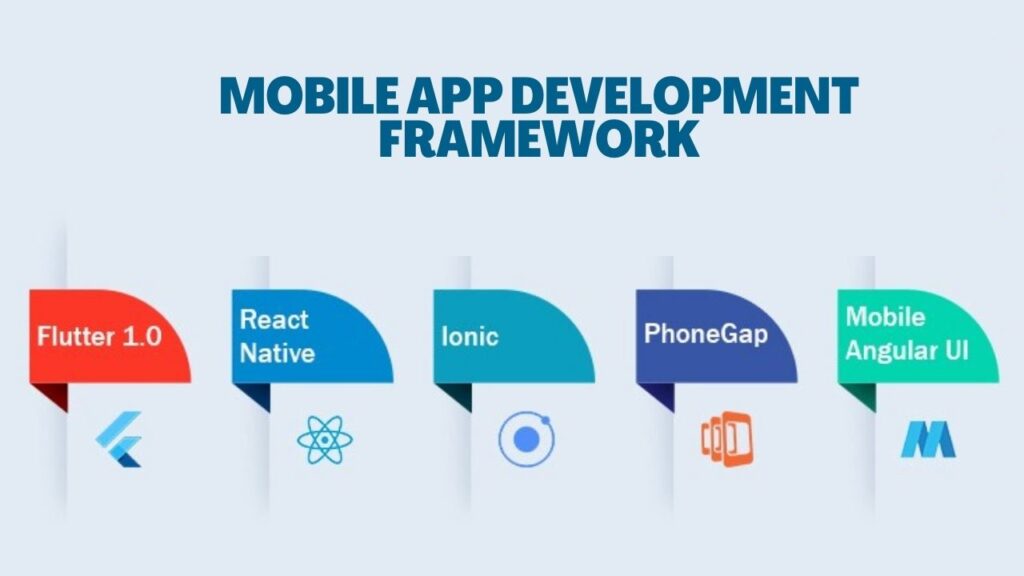Top 10 Best Cross Platform App Development Frameworks In 2022
Developing mobile apps that can run on many mobile operating systems is known as cross-platform app development. Cross-platform applications were formerly costly and time-consuming to create.
Because the code could not be transferred from one os to another, developers frequently found it more convenient to create native applications for each OS. However, cross-platform app development has become more practical with the new technology.

What More?
Frameworks for cross-platform app development make it easier to create mobile applications. Its numerous benefits are responsible for its widespread usage.
But as a result, a number of cross-platform app development frameworks and tools have entered the market. For a developer, choosing the best tool stack to create a cross-platform software may seem intimidating.
We’ve compiled a list of the best cross-platform app development frameworks so you can create a strong, flexible cross-platform app without all the hassle.
New Possibilities!
The ability to create cross-platform apps has enabled the development of:
- Hybrid App Creation For Mobile
- Rapidly Build Mobile Applications
- Apps For Windows In Broad
- Advancing Web Applications
What Does Cross Platform App Development Framework Mean Precisely?
A cross-platform app development framework eliminates the need for unique coding for every platform. Once programmed, this framework ought to function across all mobile platforms.
Cross-platform app frameworks, currently one of the most popular techniques in mobile app development nowadays, optimise the code and accelerate the procedure.
Top Ten Cross-Platform App Frameworks
These are the choices for the top 10 cross-app frameworks out of the many cross-platform app development frameworks available today:
1. Flutter
This framework, which Google unveiled in 2017, is a software development tool that streamlines the Android and iOS development process. Apps that work well across several operating systems can be created with flutter. Some of Flutter’s standout characteristics are:
Because Flutter makes use of a portable GPU, which provides UI capability, it can operate on the newest interfaces. Additionally, as Flutter uses a reactive framework, it is not necessary to manually refresh UI content. The UI changes are visible just by updating variables. Because it is affordable, Flutter is the best option for creating a Minimum Viable Product (MVP). The code is simple to modify and adapt. Because Flutter has a built-in graphics engine, separate Android interfaces are not necessary.
2. React Native
React Native is a JavaScript-based framework that enables mobile applications to have a native feel and function on iOS and Android. This technology is trusted by both companies and developers for building mobile apps.
React Native brings together the advantages of React.js and JavaScript. The programming languages Objective-C, Swift, and Java can also be used to create modules. By utilising native modules and frameworks, developers may carry out complex tasks like photo retouching, video analysis, and more in their cross-platform React Native apps.
3. Ionic
This framework, which is centred on AngularJS, enables programmers to combine the best programming languages, including HTML5, CSS, JavaScript, & Cordova Wrapper.
4. NativeScript
This framework, which is remarkable and free, is built on JavaScript. For WORA, or write once, run anywhere, capabilities, NativeScript is thought to be the best option. Since NativeScript supports all native APIs, programmers can reuse existing plugins in their applications by importing them directly from NPM.
5. Node.Js
It is a JavaScript runtime framework created using the JavaScript engine in Chrome V8. This framework, which is an open-source environment, facilitates the creation of server-side and extensible connectivity. This system can manage several concurrent connections in addition to
adaptable apps. Node.js also includes a library of numerous JavaScript modules, simplifying the development process.
6. Xamarin
With the aid of C# and.Net, Xamarin is a simplified framework for creating programmes for Windows, iOS, and Android.
7. PhoneGap
CSS, JavaScript, and HTML 5 are all used by PhoneGap or Cordova. There is also a cloud-based option that enables creators to distribute their software and obtain feedback from other programmers. In order to give the best app, PhoneGap supports built-in device features and makes use of already-existing app technologies.
8. Appcelerator Titanium
With the accessibility of native JavaScript code elements, Appcelerator Titanium streamlines the process of developing apps.
9. Corona SDK
With Corona SDK, programmers may create 2D mobile apps for all the major operating systems, including Windows. Its core is based on Lua, a lightweight, multi-paradigm programming that accelerates the creation of mobile and gaming apps.
10. Sencha Touch
Web-based, cross-platform applications that use hardware support are created with the assistance of Sencha Touch. With interconnected Ui elements and frameworks, programmers can create well-tested, secure apps.
Conclusion
Mobile application development is accelerated and simplified by cross-platform app development frameworks. Moreover, a cross platform framework enables a single-time programmed app to function on many operating systems.
With a plethora of frameworks available, a developer needs to be informed of and decide on the technological stack they want to use. Each has its benefits, and choosing the correct stack can really progress the creation of cross-platform apps.











Leave a Reply